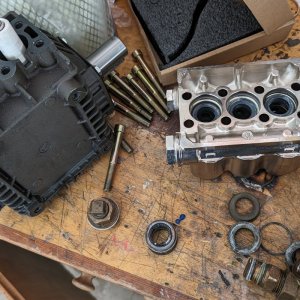There's been some discussion recently about emulsifier rinses vs. acid rinses.
If I use an emulsifier rinse like Dry Slurry, diluted to half what the manufacturer recommends, and metering it low at 2GPH. Will that create a problem for the Teflon?
I've been really happy with the results lately, but if it's going to create a long term issue with my clients who buy protectant, I need to know about it.
If I use an emulsifier rinse like Dry Slurry, diluted to half what the manufacturer recommends, and metering it low at 2GPH. Will that create a problem for the Teflon?
I've been really happy with the results lately, but if it's going to create a long term issue with my clients who buy protectant, I need to know about it.

